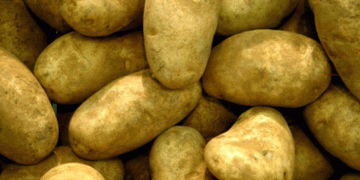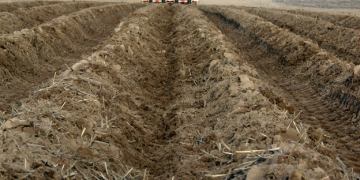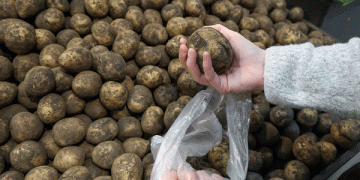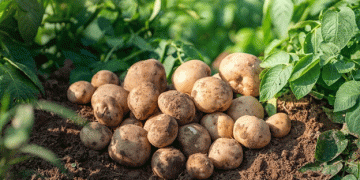In an unusual listing on the Russian marketplace Avito, a potato field in Selezan, Etkulsky District of the Chelyabinsk region, has been put up for sale. The field spans 25 hectares and is being offered for 7,555,999 rubles ($81,000 USD). The listing includes the 2024 potato harvest, estimated at 400 tons, and even offers agricultural equipment such as a potato planter, cultivator, and plow. The seller promises to train the buyer in potato cultivation, seed selection, and proper storage techniques.
Economic Opportunity or Weather-Induced Necessity?
The sale of agricultural land along with a ready harvest is rare, especially when such fields are actively producing. This indicates the mounting pressure on local farmers due to unfavorable weather conditions. According to Kairat Satbaev, the director of the South Ural Institute of Horticulture and Potato Farming, 2024 has been particularly challenging for Chelyabinsk’s farmers. Heavy rains led to excess moisture, causing an increase in crop rot. “The damaged potatoes are nearly impossible to save,” said Satbaev, adding that this could trigger a regional potato shortage.
The field in Selezan has already produced approximately 400 tons of potatoes, priced at 17 rubles per kilogram, a reasonable price given the current market and potential supply constraints caused by the extreme weather. The sale is not just about the land and current yield—it comes with the know-how and equipment required to maintain future potato harvests, presenting a potential business opportunity for anyone looking to invest in agriculture.
Challenges of Farming in 2024
This year’s growing season in Chelyabinsk has been particularly harsh due to intense rains, leading to increased crop vulnerability. Excess moisture is a leading cause of late blight and root rot in potatoes, both of which have devastated crops across the region. Farmers who were not able to adapt quickly to these conditions are now facing the risk of significant losses.
Experts point to climate-adaptive practices such as better soil drainage systems, more resilient crop varieties, and the use of fungicides as ways to mitigate these risks. However, small farmers often lack the resources to implement these strategies on a large scale, leaving them more vulnerable to weather fluctuations. The resulting crop failures have led some farmers, such as the one in Selezan, to consider selling their land or quitting farming altogether.
Impact on the Regional Potato Market
The sale of farmland combined with a deteriorating harvest outlook raises concerns about the broader impact on the Chelyabinsk potato market. If the trend of rotting crops continues, the region could face a potato shortage in the coming months. A shortage could drive up local potato prices, affecting both consumers and food processing industries reliant on steady supplies.
Potatoes are a staple food in Russia, and regions like Chelyabinsk contribute significantly to the country’s overall potato production. Given the scale of losses reported by farmers, any widespread shortage could affect not only local markets but potentially national supplies.
The sale of the potato field in Chelyabinsk highlights the increasing challenges faced by farmers due to unpredictable weather patterns. Heavy rains and crop diseases are making it difficult for small-scale farmers to sustain their operations, potentially leading to shortages in the regional potato market. While the sale represents an opportunity for new investors to enter the agricultural sector, it also underscores the urgent need for climate-adaptive practices and support for local farmers to prevent further losses.






